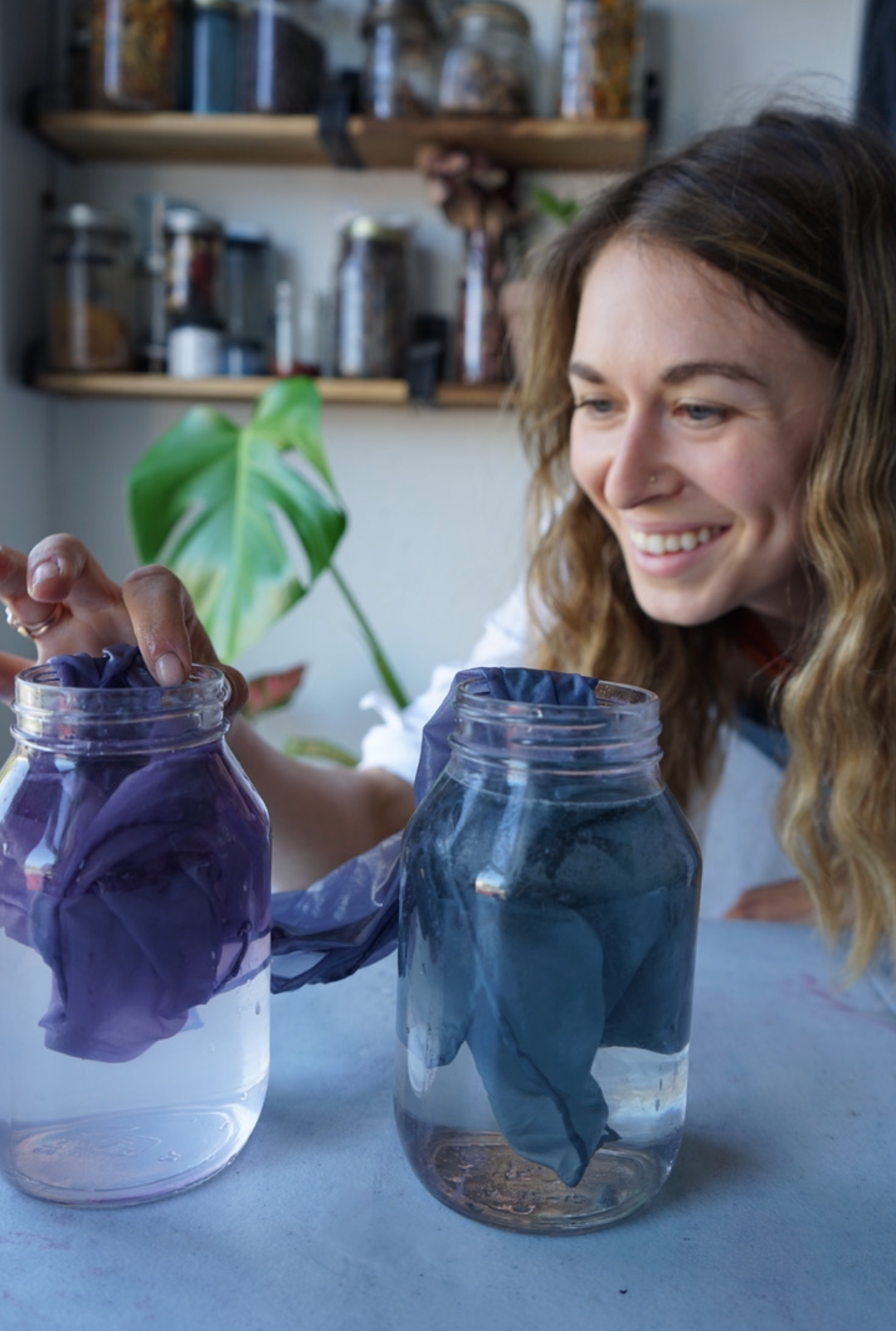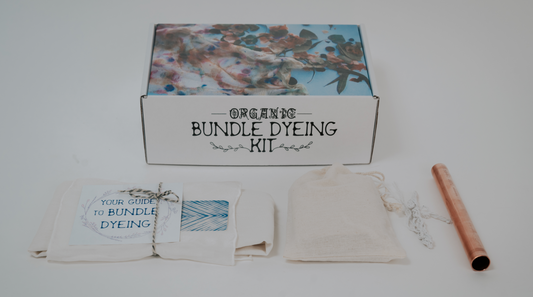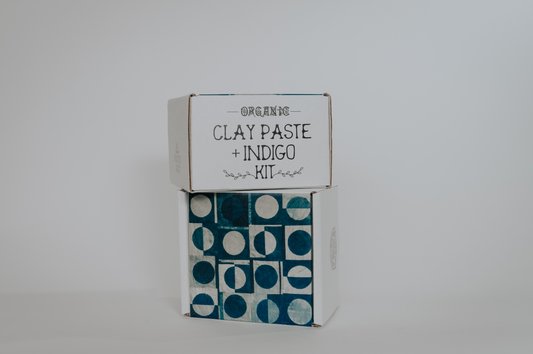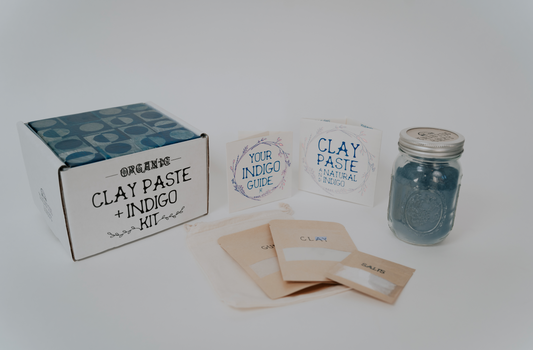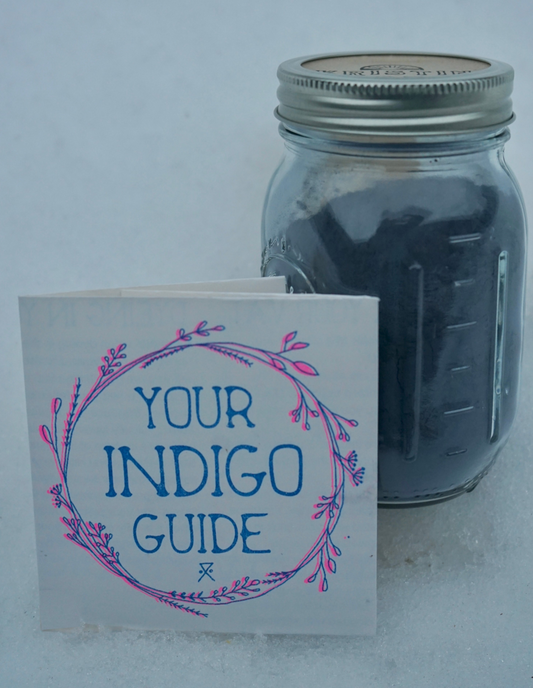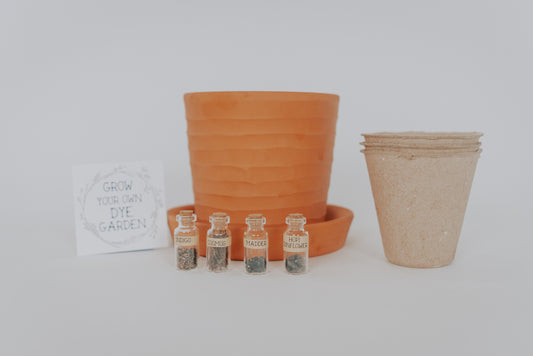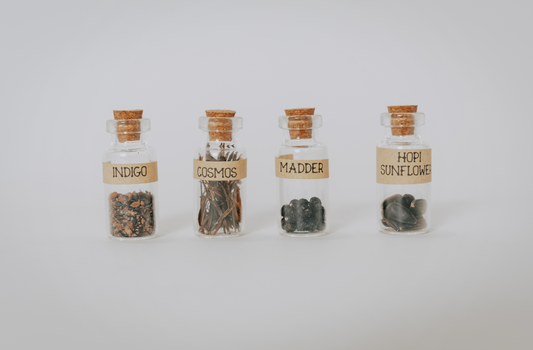Black beans are not only delicious; they are also a source of beautiful, cool natural hues thanks to anthocyanins. In this guide, we will explore the magic of black beans as a natural dye and how pH shifting can unlock their full potential. We will also cover the materials and tools needed, step-by-step instructions, and tips and tricks for achieving long-lasting natural colors.

Black Beans as a Natural Dye
Black beans are a great natural dye because they produce a range of beautiful colors, from light blue to dark gray. Black bean dye is simply a byproduct of cooking beans! We will use the soaking water to dye fabric. Black beans contain anthocyanins, which are water-soluble pigments that give the beans their color. Anthocyanins are pH sensitive, meaning they change color depending on the pH of the dye bath. In an alkaline environment, black beans turn blue, while in an acidic environment, they turn purple or pink.
The Importance of pH Shifting in Natural Dyeing
pH shifting is the process of changing the pH of the dye bath to achieve different colors. In the case of black beans, pH shifting can produce a range of colors, from light blue to dark gray. To shift the pH, you can use an acid or an alkaline substance. Common acids used in natural dyeing include vinegar, citric acid, and tartaric acid. Common alkaline substances include baking soda, washing soda, and wood ash.

Materials and Tools Needed for Natural Dyeing with Black Beans
To dye with black beans, you will need several materials and tools, including:
- Black beans
- Water
- Mordant (alum or iron)
- Fabric, natural fiber (cotton, wool, silk)
- Large pot
- Heat source
- Strainer
- pH testing strips
- Acid or alkaline substance for pH shifting
- Gloves and protective clothing
Step-by-Step Guide to Dyeing with Black Beans
pH Shifting with Black Beans
Black bean dye is notoriously what we call pH sensitive, meaning you can shift the color dramatically based on what pH you expose your fiber to. By pH shifting with black bean dyes, you can get a beautiful range of purples from periwinkle to lovely gray blues.
Add a small amount of white vinegar to regular tap water to make this water acidic. Add your dyed fabric directly to the acidic water and watch the transformation take place instantly!
You can also try pH shifting to a more alkaline color. Dissolve a small amount, maybe just a teaspoon, of baking soda in water and add your fabric. The reaction takes place quickly, so you may only need to leave your fabric in the alkaline water for a moment.
Once you are happy with the color, remove the fabric from the dye bath and rinse it with water. Hang the fabric to dry and enjoy your beautiful and sustainable creation.

Tips and Tricks for Achieving Vibrant and Long-Lasting Natural Colors
- Use high-quality plant material for your dye.
- Use a mordant to help the color molecules bond to the fibers.
- Experiment with pH shifting to achieve unique color variations.
- Wash your fabric with only pH neutral detergents, scent and dye free.
- Store your natural dyed fabrics away from direct sunlight to prevent fading.
Exploring Other Natural Dye Options
While black beans are a great choice for natural dyeing, there are many other plant-based materials that can be used to create beautiful and unique colors. Some popular options include turmeric, avocado pits, and onion skins. Experimenting with different plant materials can be a fun and creative way to explore the world of natural dyeing.
Embrace the Beauty and Sustainability of Natural Dyeing
Natural dyeing is a fun and sustainable way to add color to your life. By using plant-based materials and understanding the science behind the process, you can create beautiful and long-lasting colors without harming the environment. Whether you choose to dye with black beans or explore other plant materials, natural dyeing is a creative and rewarding practice that you can enjoy for years to come.

